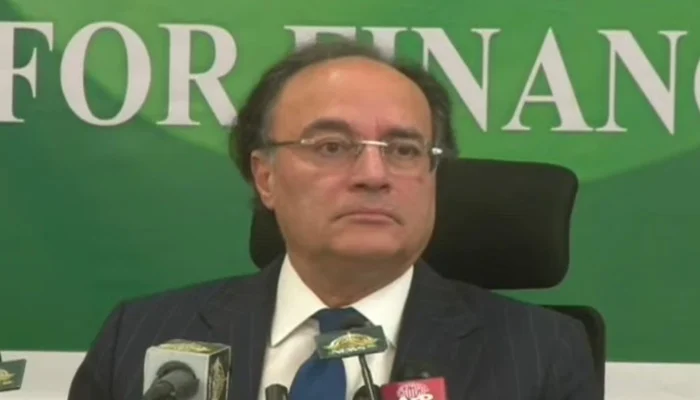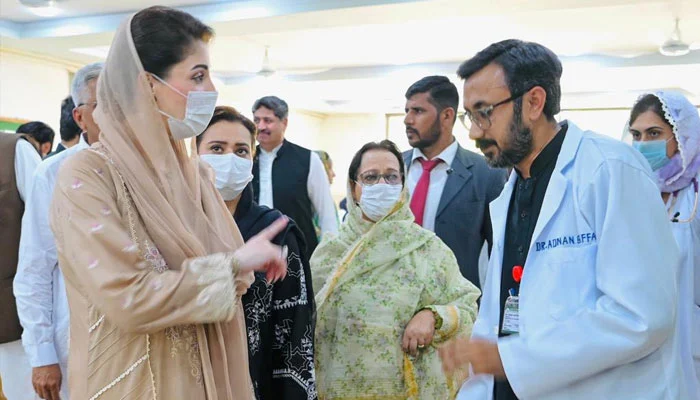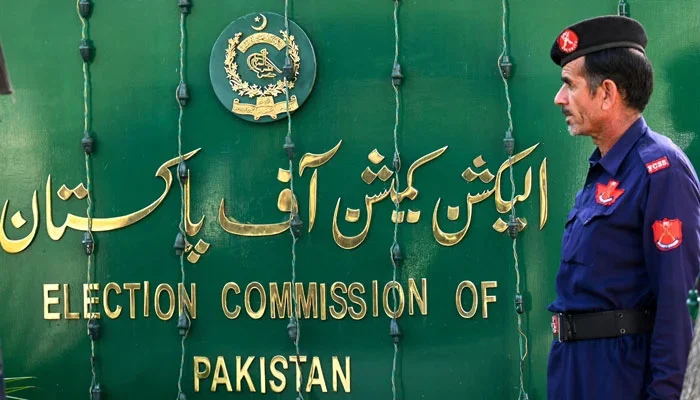ISLAMABAD: Finance Minister Muhammad Aurangzeb on Wednesday addressed a post-budget press conference, outlining the government’s fiscal vision and priorities for the financial year 2025–26 (FY26).
Speaking a day after unveiling the Rs17.57 trillion federal budget, the finance czar underscored the need to tie public and private sector pay structures to inflation benchmarks. “Whether it is the public or private sector, it must be aligned with some benchmark,” he said, adding that many countries peg salary and pension increases to inflation.
The session, held a day after the unveiling of the Rs17.57 trillion federal budget, began amid tension as journalists initially walked out in protest over the absence of a customary technical briefing by the Federal Board of Revenue (FBR).
The budget sets a GDP growth target of 4.2% while slashing overall federal expenditure by 7%. The government has proposed relief measures for the salaried class, including tax cuts and an increase in the exemption threshold.
The budget projects a fiscal deficit of 3.9% of GDP and assumes inflation will ease to 7.5% during FY26. Defence spending is set to rise by 20.2% to Rs2,550 billion, while the FBR has been tasked with collecting Rs14,131 billion in taxes — an 18% increase from the previous year — pushing the tax-to-GDP ratio to 10.1%.
It also proposes new tax slabs for the salaried class — which has borne the brunt of the tax burden — with the minimum rate reduced to 4% from the existing 15% for taxpayers earning up to Rs2.2 million annually.
The tax rate for individuals making between Rs600,000 and Rs1.2 million a year will drop from 5% to 2.5%.
Also, it suggests strict measures against non-filers to increase Pakistan’s tax net which, if approved, will leave non-filers locked out of the country’s financial system.
‘Tariff reforms key to economic growth’
Briefing the media today, the finance czar elaborated on the tariff reforms, saying that the tariff has been brought down to zero on 4,000 tariff lines out of the total 7,000.
“The tariff reforms have not been carried out for the last 30 years,” he lamented while stressing the significance of tariff reforms proposed in the budget, saying that not only were they necessary for economic development but would also contribute towards an increase in exports.
Aurangzeb said that the Centre would work with the provinces for the development of agriculture and livestock.
There should be a policy related to agriculture and livestock, he added.
The finance czar announced that small farmers would be provided loans on easy terms, and assured that the government was making efforts to offer as much relief as possible.
He clarified that no additional taxes had been imposed on the agricultural sector in the new budget. However, he added, “We can only provide relief in accordance with our financial capacity”.
The minister noted that the current inflation rate remained at 7.5%. He emphasised the government’s responsibility to reduce federal expenditures, stating, “This time, we have limited federal expenditures to 2%”.
“Our budget starts with a deficit,” Aurangzeb admitted, while also acknowledging the historical trend of rising national debt. “In the past, our debts continued to increase”.
He justified certain increases in spending, saying they were necessary. “We have to move forward according to our means,” he said.
Commenting on the government’s overall fiscal approach, he stated, “Whatever the government is providing, it is doing so by taking loans.”
He further pointed out the government’s reliance on loans and borrowed money and defended the salary hike for the National Assembly speaker and Senate chairman.
“Look at when the salaries of ministers, ministers of state, and parliamentarians were last increased. The last increase in the salaries of cabinet ministers was in 2016,” Aurangzeb added.
Pointing out that globally non-profit organisations were not subjected to tax measures, Langrial said: “No organisation will be exempt from scrutiny in the future”.
“Institutions will have to prove that they are not working on a commercial basis,” he added.
“When non-profit organisations are not established for profit, then duty does not arise. We have compiled Tables One and Two for non-profit organisations. The FBR’s tax regime is based on self assessment,” the tax authority’s chief remarked.



